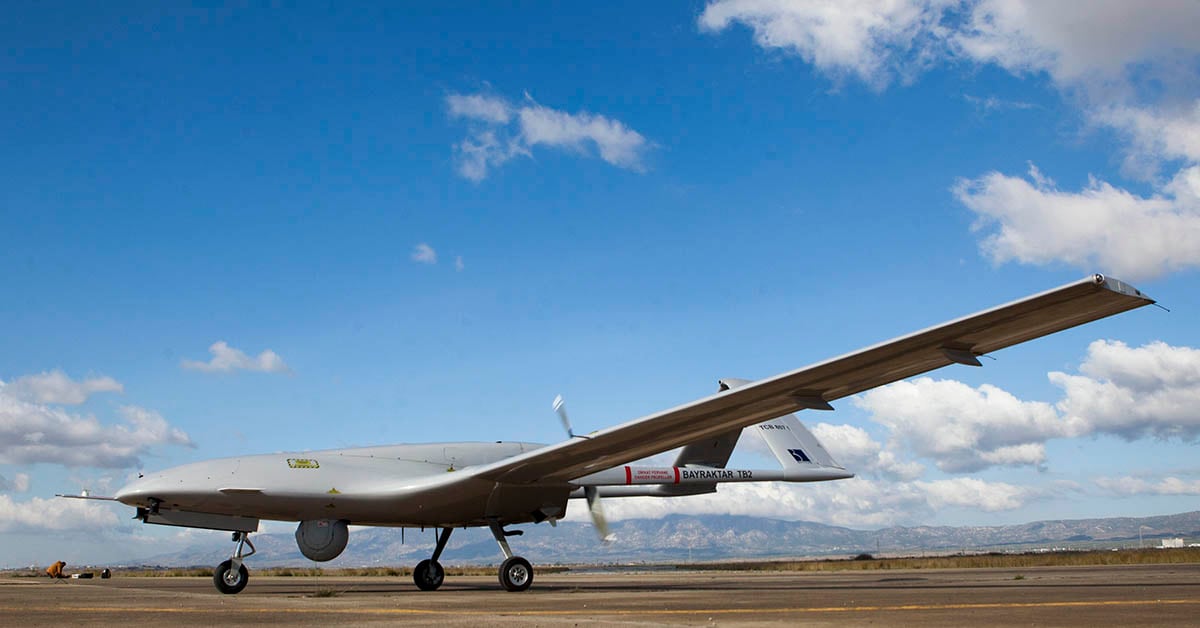Battles with characteristics of near-peer combat are raging in Africa — especially in Libya, where high-tech precision strike weapons are flooding the battlefield. And at a time when the U.S. is considering drawing down troops, the conflict in Libya is providing Pentagon planners with an opportunity to better prepare for any future conflict with China or Russia.
A 2020 UN report warns about the proliferation of high-tech weapons in Libya, from precision air and artillery to long-range drones, and the meddling of foreign actors seeking influence in the region.
U.S. Special Operations Command said in February that Africa is an area where American commandos can compete and flourish at a time where military commanders and Congress are questioning SOCOM’s viability in a near-peer war, as the elite force has predominately been trained and equipped to counter terrorist groups operating in more permissive environments.
Vice ADM. Tim Szymanski, the deputy SOCOM commander, told audience members attending the Global SOF foundation in February that SOCOM’s commandos are uniquely placed in areas where China and Russia are actively competing, including countries across Africa. SOCOM boasts 6,000 folks in 70 counties, providing “placement and access," Szymanski said.
RELATED
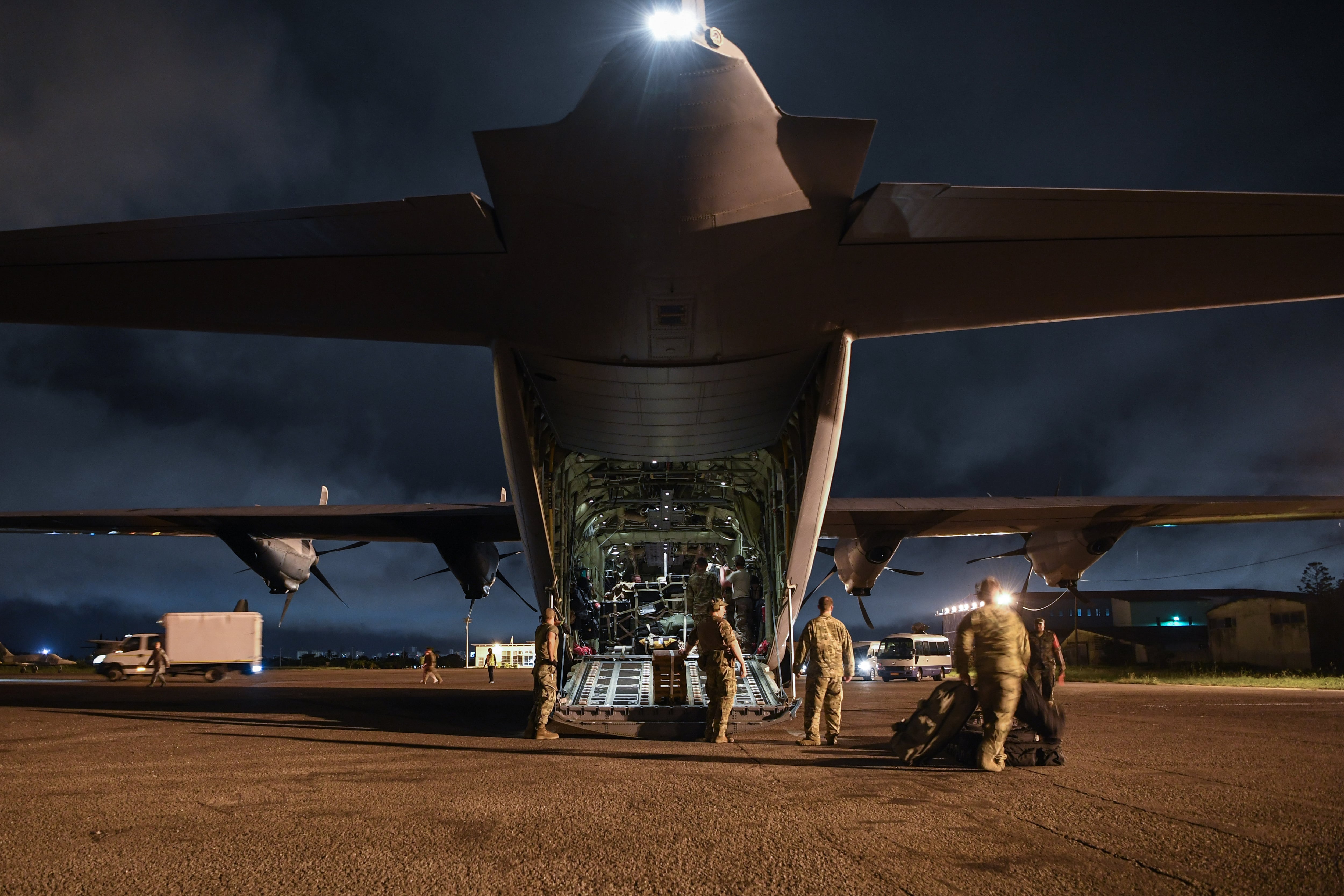
This allows U.S. special operators to compete with “state malign activity” and in “places where China and Russia want to be.” For now, much of America’s military involvement in Libya is aimed at killing ISIS fighters and keeping the group from making a comeback.
The plunder of former Libyan dictator Col. Moammar Gadhafi’s armories during the 2011 uprising flooded the battlefield with with an array of dated Russian and Soviet heavy weapons, machine guns, artillery and outmoded armored vehicles. The conflict remained for years a low-tech counterinsurgency war until now.
The battlefield now features air defense systems, long-range drones, electronic war and the jamming of GPS systems that stretches 50 miles in from the Libyan coast — a hallmark of near-peer conflicts like Ukraine’s war with Russia and its separatist forces on the eastern front.
“The use of air power and precision technology, including precision-guided artillery, has become a dominant feature of an otherwise low-intensity conflict,” the UN report reads. “Multiple incidents of precision air strikes conducted by unknown aircraft have occurred, in apparent violation of the United Nations arms embargo."
The rapidly-morphing war in Libya may provide U.S. forces and American commandos an experimental battlefield to gauge how U.S. troops can compete with rising near-peers in a region often dominated by low-tech conflict and violent extremist groups.
The Pentagon is considering axing resources and manpower for counterinsurgency conflicts to address great power competition concerns — which is drawing rebuke from lawmakers and national security experts who are worried that an ensuing power vacuum will breathe new life into the plethora of terrorist and militant groups across the U.S. Africa Command area of responsibility.
Military officials with AFRICOM argue that the continent is rife with near-peer competition, with China and Russia competing for influence and sowing malign activity across the region.
But the Libyan battlefield remains an example of where near-peer rivals are competing for influence, where high-tech weapons are being tested among proxy forces, and where hired guns with private military companies are fielding tech once reserved for nations, like radar systems and air defense missile batteries.
Chinese tech has found its way on the Libyan battlefield, while Russian mercenaries with the Wagner Group are alleged to be supporting Khalifa Hifter’s Libyan National Army. AFRICOM believes a U.S. drone brought down over Tripoli on Nov. 21, 2019, may have been targeted by a Russian mercenary group.
RELATED
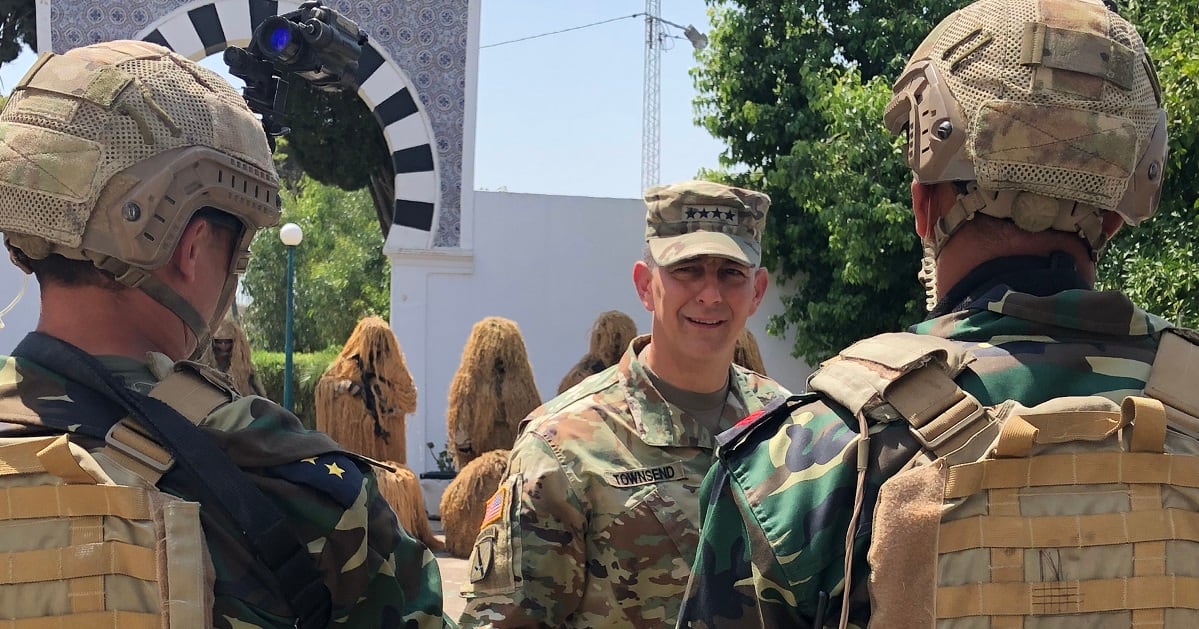
A recent Defense Department inspector general report warns that Wagner Group mercenaries recently increased their footprint in Libya by 600 to 1,200 personnel.
“Russia also want to position, particularly in northern Africa, particularly in Libya. They want a position on NATO’s southern flank there. They also, I think, want to thwart, you know, what we’re trying to do and present themselves as a great power alternative to the United States,” Army Gen. Stephen J. Townsend, the AFRICOM commander, told lawmakers in January.
The UN warns outside foreign actors are fueling both sides of the conflict, pitting the Tripoli-based, UN-backed Government of National Accord in a drone and tech war against Hifter’s forces.
For now, the UN cautions, the Libyan National Army has the upper hand in the drone war. It’s equipped with an alleged UAE-supplied Chinese drone known as the Wing Long II that boasts a 2,000 km range through a satellite link and is reportedly armed with Chinese manufactured Blue Arrow 7 precision strike air-to-surface missiles.
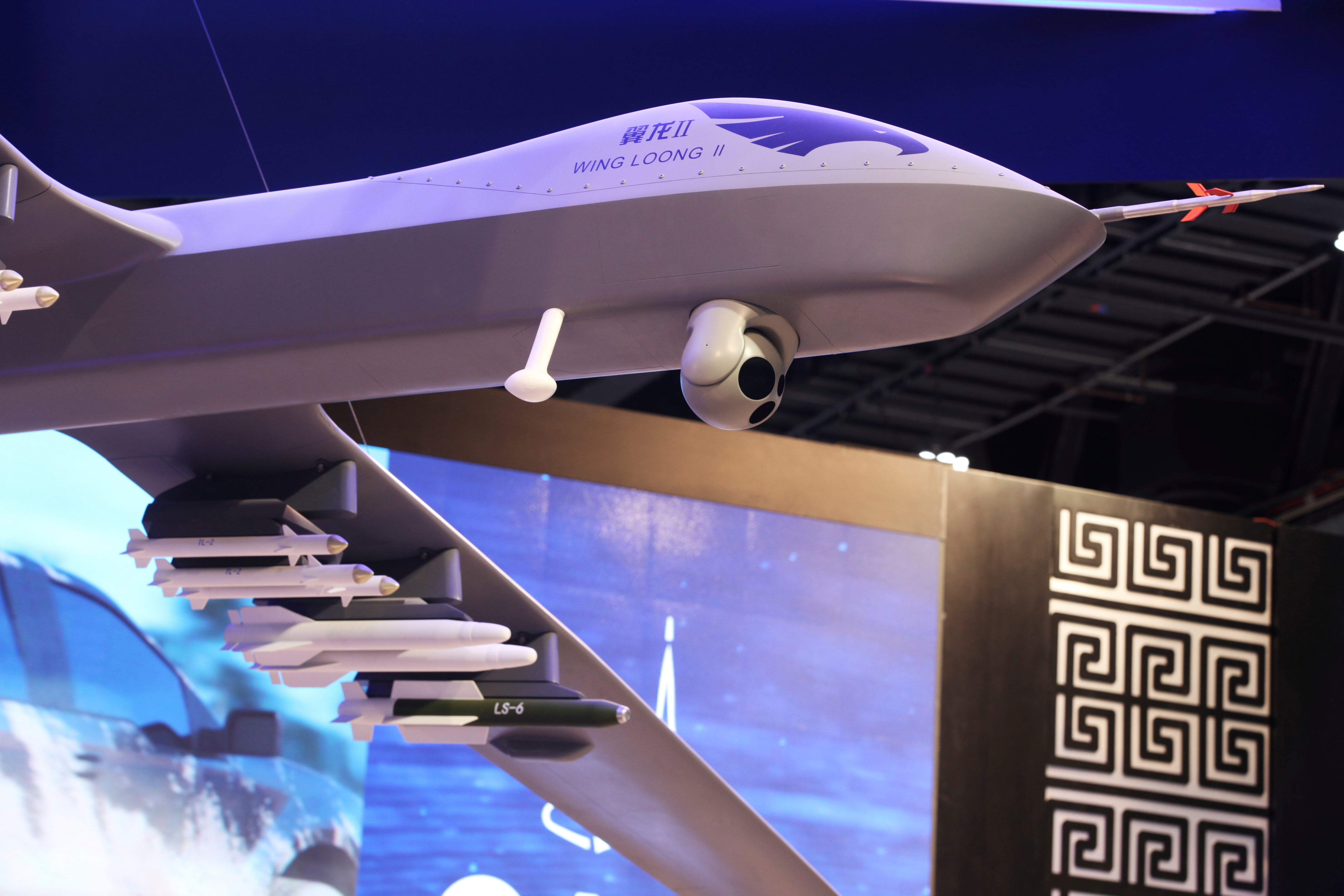
The UN says Hifter’s forces have a “significant tactical advantage” over Tripoli’s Turkish-manufactured Bayraktar TB2 drone that boasts a limited range of 200 km and a much smaller 55 kg payload, armed with two Turkish Roketsan Smart Micro Guided Munitions.
Hifter’s Chinese-built satellite-linked drone can cover all of Libya, allowing his forces to punish GNA airfields and runways.
“This provides HAF [Hifter Armed Forces] with a full offensive capability and allows it to achieve local air superiority,” a December 2019 UN report reads.
“Since May 2019, the ‘drone war’ has escalated, and for both parties to the conflict UCAVs [unmanned combat aerial vehicles] are now the main means to conduct air strikes and drop precision guided munitions,” the 2019 UN report explains.
Combative forces in Libya are also rapidly evolving the type of armored and tactical vehicles operating in the country. The 2019 UN report said it tracked five new types of tactical vehicles and noted a “transition” of converted technicals to the “preferred” use of “wheeled armored vehicles.”
For several years following Gadhafi’s fall, militants and insurgents could be seen rolling down Libyan streets in old modified Toyota pick-up trucks with mounted heavy weapon systems — a low-tech tactical vehicle commonly called the technical. The cheap technical has been a dominant military vehicle across counterinsurgency conflicts around the Middle East.
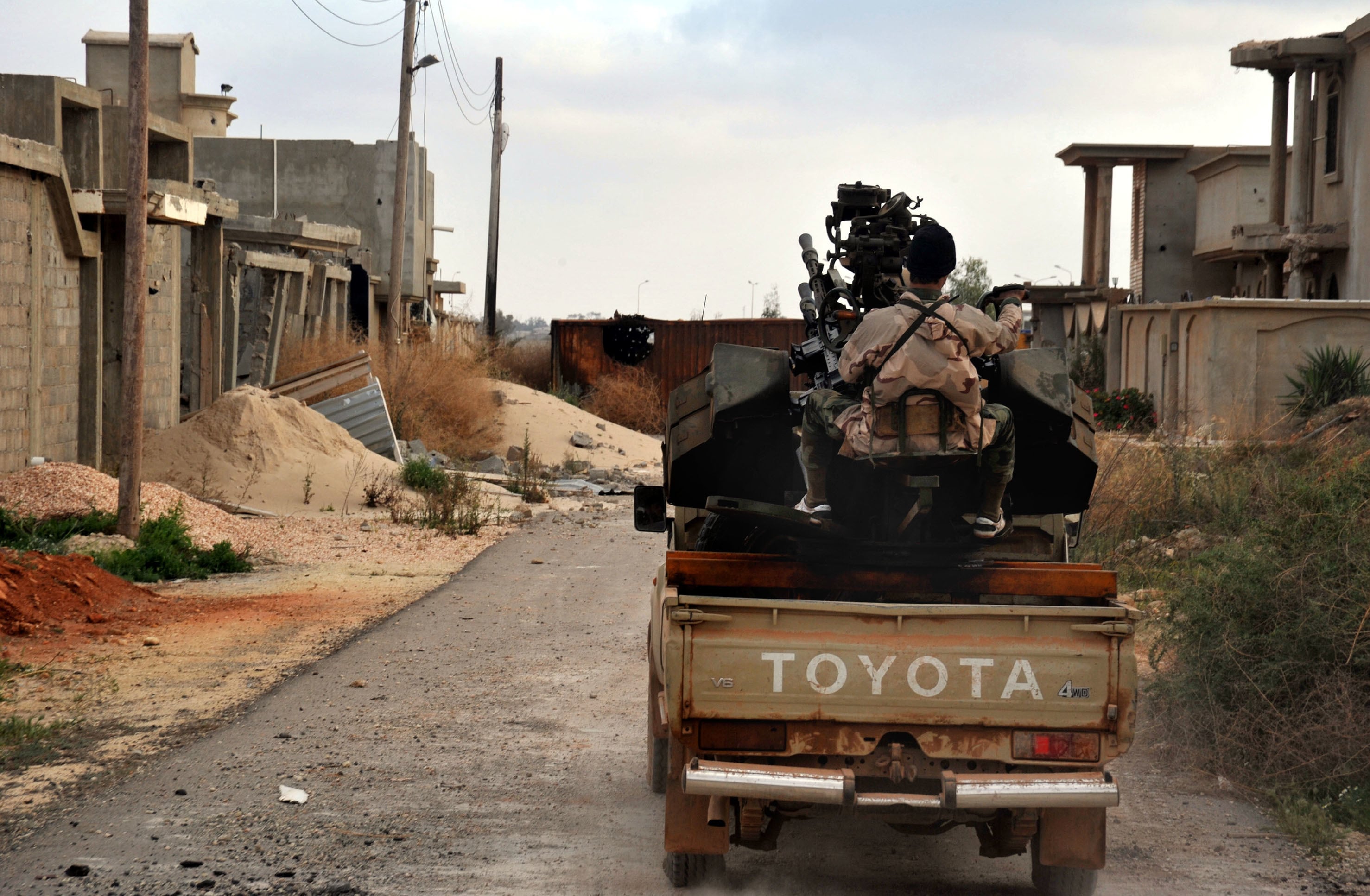
New vehicles consisted of Turkish-manufactured Mine-Resistant Ambush Protected Kirpi, the American BAE-built Caiman MRAP, and the Jordanian-produced al-Mared 8X8 infantry armored fighting vehicles, among other vehicles, the UN report detailed.
The UN says Libya remains a low-intensity conflict, but high-tech weapons, air defense systems, modern armored vehicles and precision strike capabilities once reserved for sophisticated nations are rapidly proliferating on the battlefield.
Libya is a proxy conflict with characteristics akin to the high-tech war raging in Ukraine where electronic warfare, jamming and sophisticated drones and precision tech are the norms of the conflict.
Shawn Snow is the senior reporter for Marine Corps Times and a Marine Corps veteran.
